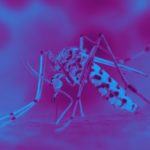Link to Pubmed [PMID] – 26770994
J Immunol Res 2015;2015:738030
The last decade has witnessed a steady reduction of the malaria burden worldwide. With various countries targeting disease elimination in the near future, the popular parasite infection or entomological inoculation rates are becoming less and less informative of the underlying malaria burden due to a reduced number of infected individuals or mosquitoes at the time of sampling. To overcome such problem, alternative measures based on antibodies against specific malaria antigens have gained recent interest in malaria epidemiology due to the possibility of estimating past disease exposure in absence of infected individuals. This paper aims then to review current mathematical models and corresponding statistical approaches used in antibody data analysis. The application of these models is illustrated with three data sets from Equatorial Guinea, Brazilian Amazonia region, and western Kenyan highlands. A brief discussion is also carried out on the future challenges of using these models in the context of malaria elimination.

